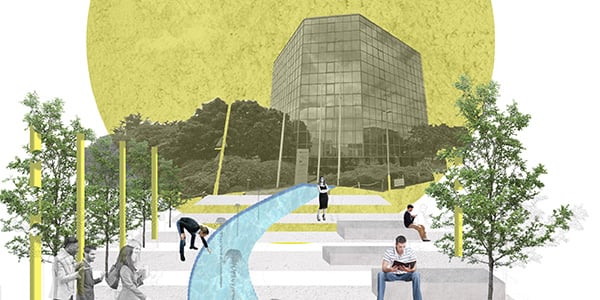
Buildings are a significant contributor to carbon emissions. According to Passivhaustrust.org, they’re accountable for 35% of total global energy consumption, and residential and commercial builds in the UK are responsible for 25% of UK greenhouse gas emissions.
In response to this, the Passivhaus Institute in Germany developed energy efficient building principles following a research project, which investigated why low-energy buildings often didn’t deliver on their expected energy saving potential.
What is Passivhaus?
‘Passivhaus’ refers to buildings created in accordance with rigorous energy efficient design standards so they maintain an almost-constant temperature. Passivhaus-standard buildings are so well insulated and ventilated that they retain the sun and occupants’ heat, therefore requiring very little, if any, additional heating.
Key principles
A Passivhaus-designed building looks no different from the outside, but has to pass rigorous quality assurance processes. They’re planned, optimised and verified with the Passive House Planning Package (PHPP) and need to meet five main principles and essential design features:
- High-quality thermal insulation levels. By utilising highly insulated building envelopes (separating the exterior of the building from the interior), heat loss is minimal and indoor temperatures are consistent. Some Passivhaus designers create entire buildings from insulating materials (such as wood fibre and Porotherm blocks) to minimise the need for external energy.
- Ventilation with heat recovery. Mechanical ventilation systems ensure a constant supply of fresh air while recovering heat from outgoing air, further reducing energy consumption and maintaining indoor air quality.
- High-performance windows. Windows are the weakest points of buildings when it comes to heat loss. Passivhaus-standard buildings use triple glazing, low-emissivity coating and noble gases between each layer of glass to minimise heat transfer while maximising natural light.
- Elimination of thermal bridges. This relates to weak points and areas in a building where heat may pass through. For Passivhaus buildings, thermal comfort must be met for all living areas during winter as well as summer, with no more than 10% of the hours in a given year over 25°C.
- Air-tight construction. This is defined as a maximum of 0.6 air changes per hour at 50 Pascals pressure (ACH50), which is verified with an on-site pressure test (in both pressurised and depressurised states), which must be adhered to.
Advantages of adopting Passivhaus principles
There are great benefits to adopting Passivhaus principles in building and construction work.
- Reduced carbon emissions from heating sources
- Lower utility costs
- Potential rebates and tax relief
- Improved indoor air quality and allergy relief
- Reduced reliance on outside power
Challenges and considerations
As with most advances in technology and new adaptations to carbon reductions, there are some notable problems and issues:
- Passivhaus buildings are more expensive than non-Passivhauses, typically by 10%
- Passivhaus builders and architects in the UK are currently in the minority, and there’s a resistance from many builders to adhere to these conditions as they can be complicated
- There are public misconception that you can’t open the windows in a Passivhaus, therefore being stuffy and moist – this isn’t true
- MVHR systems (Mechanical Ventilation with Heat Recovery) are difficult to operate
How you’ll benefit from an online MA in Interior Design
Our online MA in Interior Design can help you explore concepts like the Passivhaus approach to create more sustainable new and existing buildings and spaces.
This course will provide opportunities for those interested in enhancing their knowledge in interior, architectural, product or textile design disciplines, providing a broad spectrum of knowledge to take forward into future careers, with a unique blend of
research, practice and creative theory. Find out more:
Related posts
Interior design in educational spaces
Discover how interior design plays a role in educational spaces and the learning experience.
Read the storyHow to become a freelance interior designer
Turn your interior design passion into a freelance career. From portfolios to rates, here's all you...
Read the storyWhat does ‘reinvent’ mean in interior design?
Discover what reinvention means in interior design, its wider impact on society and where to go to...
Read the storyStart your creative journey here.
Want to chat or ask a few questions? Fill this in and we’ll give you a call back.
